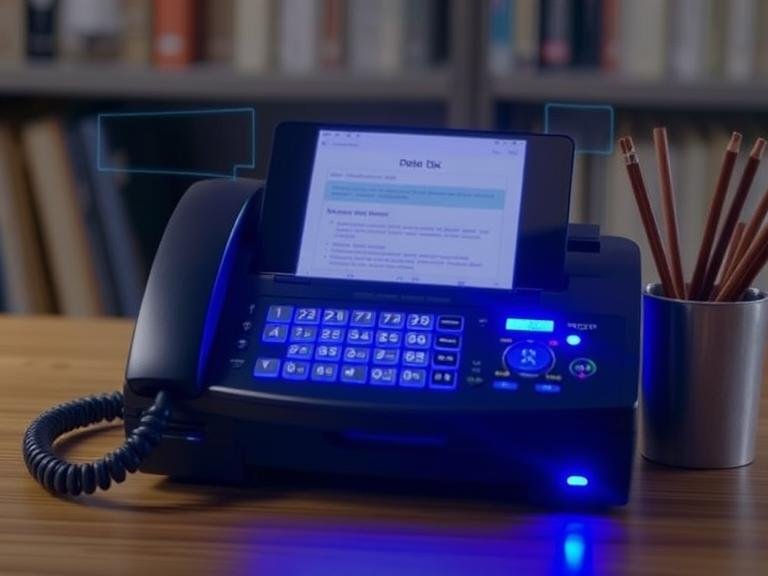Digital faxing requires document compliance to handle sensitive information securely and legally. As businesses transition to digital methods, understanding how to maintain regulatory standards is crucial. With regulations becoming more stringent across industries, organizations must prioritize compliance to avoid penalties and maintain customer trust.
This article explores key strategies to ensure compliance, focusing on secure practices and the integration of technological solutions in digital faxing. Whether you need to fax a PDF for business transactions or healthcare documentation, following proper compliance protocols protects both your organization and your clients. Let’s examine the essential steps to achieve and maintain document compliance in your digital faxing operations.
Understanding Compliance Requirements
Compliance is the process of following the law. Depending on the industry, these can follow certain rules and guidelines, which mostly cover data protection and privacy, amongst other, more technical regulations. Organizations need to understand the regulations that apply to their industry to fax digitally in compliance with the standards that need to be maintained. This involves learning about data encryption, user authentication, and secure transmission protocols. Regulatory frameworks like HIPAA for healthcare or SOX for financial services establish specific requirements that organizations must follow when transmitting sensitive documents through digital channels.
Implementing Secure Transmission Protocols
Digital faxing requires secure transmission. The company must use encryption to protect data on the move. Information can be protected by protocols like Transport Layer Security (TLS), ensuring information remains unreadable to those with illicit intent. Encryption is a strong practice, and by making sure data is encrypted both at rest and in transit, businesses can reduce the chance of information leaks substantially. Modern encryption standards such as AES-256 provide military-grade protection for sensitive documents during transmission.
Utilizing Authentication Measures
Authentication is an integral part of compliance for a document. Using multi-factor authentication (MFA) ensures that users confirm their identity, thereby minimizing the chances of a breach. From implementing two-factor authentication to demanding passwords, security tokens, and other levels of information that only the authorized personnel will know, it maximizes security features and ensures sensitive documents are being accessed only by authorized personnel. Biometric authentication options like fingerprint or facial recognition add another layer of security for high-sensitivity environments.
Regular Audits and Monitoring
Regular audits also ensure consistent compliance. The reviews determine whether practices of digital faxing fall in compliance with regulations. A monitoring system can identify any unauthorized access or any such activities that violate security. Regular audits and monitoring help in detecting any loopholes in an organization and taking corrective actions at the right time, ultimately keeping compliance and sensitive information intact. According to the Federal Trade Commission’s guidance on data security, organizations should conduct regular security assessments to identify vulnerabilities and ensure ongoing compliance with data protection requirements.
Choosing the Right Digital Faxing Solution
Compliance hinges on the right digital faxing solution selection. Solutions should provide strong security features such as encryption and authentication. Besides, they must have seamless system integration to avoid any disruptions. Compliance features in solutions vary from one option to another, but organizations can weigh these features against various options to arrive at the best-fit solution. Look for solutions that offer audit trails, automatic retention policies, and compliance certifications relevant to your industry.
Training and Education
Document compliance is heavily reliant on employees. Regular training gives staff the knowledge they need to support secure digital faxing safely. These sessions must also focus on secure transportation, data protection, and the identification of phishing, etc. Informed workers are less likely to violate compliance protocols, minimizing the chances of accidental data breaches. Training programs should be updated regularly to reflect new threats and regulatory changes in the digital landscape.
Maintaining Updated Policies
Keeping policies updated is essential. Organizations need to adapt their practices as regulations evolve. Periodic review and revision of policies also make sure they are up to date with current standards. Clear documentation of procedures and guidelines eliminates uncertainty about what employees must do in their daily operations to maintain compliance. Policy reviews should occur at least annually or whenever significant regulatory changes occur.
Utilizing Secure Storage Solutions
Safe storage of documents is a critical feature of compliance. The digital faxing solutions must offer secure storage with encrypted data protection. Access controls ensure that only permitted personnel have access to the document. Safe storage solutions avoid unauthorized access and protect sensitive information. Cloud-based storage with end-to-end encryption provides both security and accessibility for authorized users across different locations.
Incident Response Planning
Of course, certain compliance-related requirements necessitate possessing an incident response plan. It should include contingency plans if a security breach happens. Immediate and proper handling reduces loss and assists in preserving confidence. Periodic reviewing and testing of the plan will keep organizations prepared to respond to incidents effectively while still complying. Organizations should designate a response team and establish clear communication protocols for breach notification.
Conclusion
When it comes to ensuring document compliance through digital faxing, it requires secure practices backed by these technological solutions, along with adequate employee education. These strategies help to protect sensitive information and meet regulatory requirements, and by understanding them, organizations can better implement and utilize these strategies. Keeping one step ahead of compliance is a never-ending cycle of audits, policies that need to be updated, and staff training that needs to be adapted to the ever-growing regulatory standards.




